#our gm homebrewed a lot
Explore tagged Tumblr posts
Text




Was combing through my files and found this mess of a found family I made for a Kingmaker campain, so meet (in that order): Módir, a sentient piece of land and three of her children -- Aagmundr, a wolf witch who feel out of the moon; Einarr, tiny boar barbarian who shows affection through figthing; Kvasir, former god who was killed brutally had his conciousness fractured and what's left of him got fused with the soul of an elf who's body he now possess (kinda), oh and he's a very socially anxious bard.


Plus the portraits of these two, because I made them first and they were the two I played with the most before I had to leave the campain...
Fun fact: Einarr has fucked up bangs because she asked Kvasir to cut her hair onceand he messed up, she loved it and refused to change it since
#my art#digital art#pathfinder#pathfinder kingmaker#technically#our gm homebrewed a lot#so it was more of a nordic mythology kind of deal#but mechanically speakig it was kingmaker#so yeah kvasir is based on nordic god kvasir#anyhow loved these guys and their weird little family dynamic thing#unfortunatelly i didn't have the time to stay on the campain properly#i still wish I could rework them into something#who knows maybe I will#also#furry art#bc you know#it is indeed furry art#mostly#and some people may appreciate that
7 notes
·
View notes
Text
New-ish post, kinda posting this on different platforms and getting a general vibe check for some ideas I have. But basically this Halloween I want to actually do something for the TTRPG and Actualplay world (oh yeah I’m into those kinds of things). I want to try and get both players, GMs, and casual viewers alike something fun to look forward to this especially spooky season. I’ll probably talk a little more when we get closer to the actual season of scare-giving but just know that if you’re interested I’m still looking for people to join in!!
As my team and I’d first debut we’re going to try and do a two to four session actual play, which will probably be released in the weeks leading up to Halloween. We’ve had a couple good friend way in on the matter of “setting” but now I come to you fine folk. Mind you this is a horror campaign/arc so if…

Isn’t your thing, keep on a moving.
But without further ado here are a couple of the possible settings for our players, and myself, this coming espookee season…
1.) Somewhere off the coast of Florida, 1926 end of the first major housing boom in the state, a small island which calls back to the Spanish Empire, is Isla Boñyela, a small port made tourist location during the boom of disposable wealth in 1920s America. A small group of friends from the northeast tag along down for the perfect paradise vacation. Only to discover the island is much much older than anyone could have ever assumed. Whilst dealing with upstart gangsters, unnerving US soldiers, and the terrified locals they find something older than even undead conquistadors.
While I don’t have a working title, this is an old project in the running which I’ve had a few attempts at revamping over time. Its previous title was “perfect paradise vacation,” and runs on the Call of Cthulhu 7th Edition game. Anywho it’s a blast of fun with Caribbean lore, tone of anti-imperialism, and something dark lurking beneath the waves.
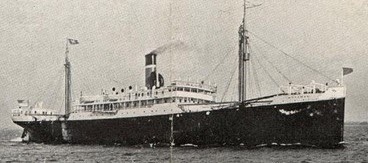

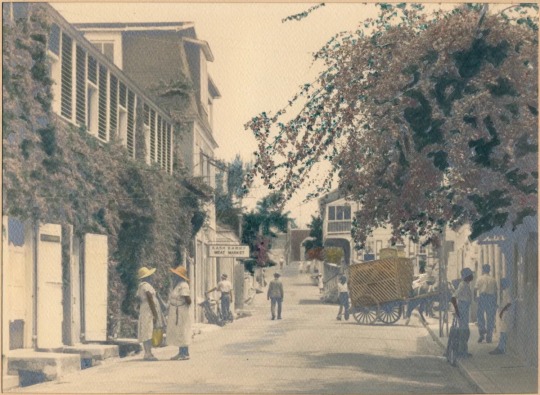
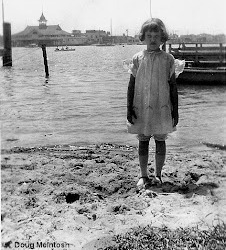
2.) 1950’s America, the nonexistent state of Mid-Atlantia (DMV coded) in a small suburban neighborhood where nothing goes wrong… it’s almost “All-Hallows-Eve” and little Johnny and Susie want nothing more than to trick or treat this year with all the big kids, Dad’s finally getting the big promotion at work, and Mom just got a new waffle iron! Sure everything is neat here in America. Heck you just got new neighbors! Newlyweds in fact from somewhere big and fancy, they sure aren’t like any of us in our simple town. But… and you can’t say exactly why but things are different. Or perhaps they’re all too the same? Everyday a repeat of ever other bland day that followed you over and over and over and over… and you could swear, while no one may listen to you there’s someone out there. Stalking you from outside your own home- or- perhaps, he’s just your friendly new neighbor welcoming you… to the end.
Ahhhhhh! I’ve also been working on this one for a sec and god writing it out does excite me. This is also a Call of Cthulhu game but modified/homebrewed to have a uniquely 1950s horror feel. This is definitely one of the more unique games I’ve written and am truly interested in seeing where it goes (even if we don’t choose it). This is for those who feel like isolation, fear of the unknown, fear from within, and liminal space horror comes best into play! So whadya say neighbor?
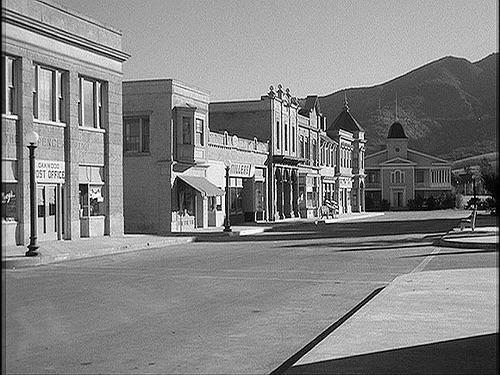




3.) The Enemy of My Enemy is My Friend, or How I Learned to Love Strahd, okay so this one is a lot less horror-y and falls much more under the comedic spooky category, just so yall know. Deep in the middle of Barovia, the ancient kingdom of Vampires, meets a council of Count Strahd von Zarovich's greatest commanders and lieutenants to hunt down Strahd's greatest enemy Rudolph van Richten and his party of heroes known as "The Grape-Smashers." Strahd's lieutenants have been gifted powers greater than any mere mortals, but are these gifts enough to stop Van Richten, or even enough to stop the personal ambitions of each other? Come find out in "How I Learned to Love Strahd."
Okay, as much as this may seem like a joke suggestion it cracks me up and I feel like it would be ill-advised of me to not at least mention it. In an era where "The Curse of Strahd," is well-overdone at this point, it's worth a take from an all evil "revenge story." Obviously this will be in Dungeons and Dragons 5th Edition, which, in my opinion, is really hard to use for horror, but this is a nice go-around. Come for the evil PCs, maybe a PvP battle or two, and a game of intrigue in the shadows of Barovia! All that and a buff Van Richten.

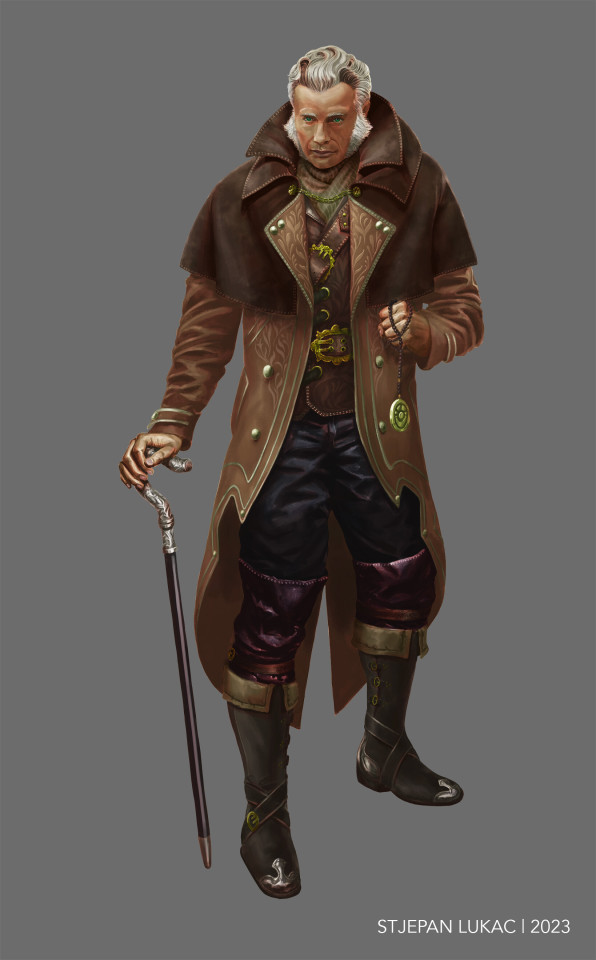


4.) Before Annapolis was ever called such it was known as Providence, a settlement of exiled Puritans in the Province of Maryland, but these early days were no easy set-up for the far-flung protestants... in the mid 1600s the English Civil War spilled out into their holdings across the waves as brother turned on brother, clan erasing clan, and something from the shores of the Old World would arrive in the New. When around every corner could be someone you've known your whole life, what's stopping them from hunting you in the depths of winter. All matters made worse when rumors of a witch begins circulating your small home.
Think "The VVitch" (2015) meets "A Field in England" (2013) meets Atun Shei's recent film "The Sudsbury Devil" (2023). It is the unexplored wilderness of early colonial Maryland, but the hateful warmongering that slowly builds that makes the horror and tension so clear. Unsure of what system we'll be using, but maybe the new Regency Cthulhu system.



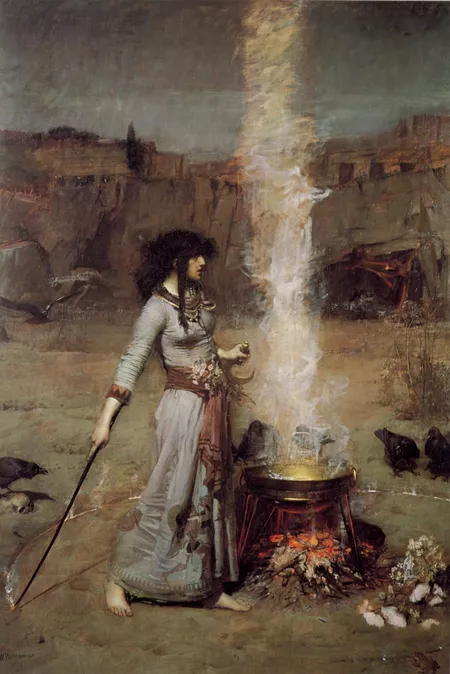
5.) The Great Baltimore Fire of 1904 destroyed some 140 Acres of Baltimore proper... and in it's rubble awakened something far worse. But you and your fellow survivors are just trying to get by in the aftermath of the fire... only for something to call out, whether some strange magicks or perhaps just a sickness... but sickness doesn't even linger like this... it doesn't call to you...
Some more local history, aspiring from the actual Fire of 1904 things quickly devolve from there as rumors of a cult begin to spread along the streets of Rosland Park... a mysterious illness leaving even more dead... and the death of an eclectic professor. Definitely using the Call of Cthulhu 7th Edition for this one.


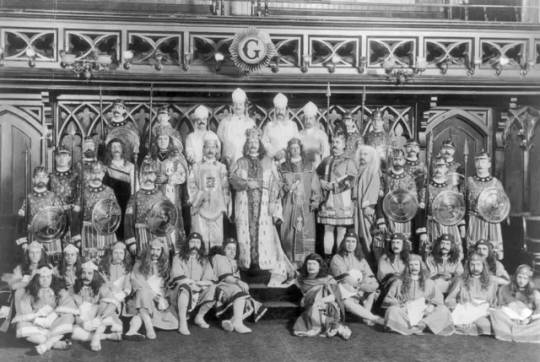

Aaaaaaaand that's it! Let me know what y'all think!
#dungeons and dragons#d&d teaser for my campaign#d&d#dnd#call of cthulhu#roleplay#rp#critical role#dimension 20#actual play#dnd liveplay#cosmic horror#horror#lovecraft#lovecrafian#campaign#dnd campaign#writers on tumblr#original story#writing#writer things#worldbuilding#maryland#baltimore#baltimore history#history#historic fiction#historic fantasy#baldur's gate 3#live play
43 notes
·
View notes
Note
Aita for never making white ttrpg characters?
Title is a little weird, but I play a lot of ttrpgs with friends. I (M19) am white, so is all but one girl in our ttrpg group (F23), she’s Puerto Rican.
Anyways, all the games we play are rpgs based in the real world, whether they be urban fantasy or horror, they’re never in fantasy worlds. I like to explore different cultures, researching them and designing accurate characters for these games. I made a Bangladeshi girl for a MASKS: New Generations game who wanted to be the first desi superhero in America and was attending a superhero boarding school in upstate New York, I made half Iraqi/half Black boy in a homebrew power by the apocalypse game who was raised by his Chinese step-mother and was adopted into a giant extended family that took place in Brooklyn NYC, I made a black camp counselor for a Sleepaway oneshot, and I made a Mexican/Cajun boy for a Monsterhearts game taking place in south Louisiana.
For every character, I took my time and did days of research into backgrounds, cultures, and potential sensitivity issues. The last thing I want is to misrepresent a culture. The Puerto Rican girl in our group, let’s call her “Mary”, has never had a problem with my characters, but I’ve gotten comments from other players that it’s weird that I never play any white characters. I’ve made a white character twice; one for a Ten Candles game who was a 50 year old vet (and I miss him everyday, easily one of my favorite one-off characters because of his intense hatred of the Dallas Cowboys), and one for a homebrew 80’s slasher game who somehow because the first jock to be a final girl (He was too pure for this world, can’t wait to play his reincarnation in an ALENS game)
Our forever GM hasn’t ever had an issue with my characters, she even brings a giant variety of NPCs from all over to her games and makes the whole experience so much fun. The few times she’s made characters, they’ve always had great chemistry with mine and I’ve always had a good time
But, even with Mary’s and the GM’s approval, I still feel off about the comments of the other players. I love my characters, and the research I do for them helps me as a writer as that’s my profession atm. It seems like every time I propose a new character who isn’t white, I get asked “so what part of the world are they from now?” or “aren’t you German? Are you scared of doing a German character?” or other questions like that
I don’t play ttrpgs to insert myself into different fantasies, I play ttrpgs to explore new characters and new settings through different experiences. I don’t want to be labeled racist, but I understand if I’m coming off that way. If I’m voted the asshole, I’ll reflect and learn why. Commenters, deffo tell me how I can be better.
Anyways, AITA?
TL:DR, I’m white, I make primarily POC characters in ttrpgs, my group is annoyed and makes passive aggressive comments each time I do so. Aita for not making more white characters?
🔮
to find this later ^^^
What are these acronyms?
103 notes
·
View notes
Text
So, I'm playing in a game of Wrath of the Righteous for 1e Pathfinder. My character is a witch with a martyr complex who always jumps in front of the danger in order to protect whoever she thinks needs protection, but not in a suicidal way. Her class was originally a homebrew we found, a Paladin/witch hybrid class, pretty fun to play, and she was a follower of the Cardinal Martyr, Vildeis, so she had a personal crusade against evil. But she's a witch, so she can't land a hit to save the life of her, nor can handle too much damage.
Anyway, fast forward to the end of book 2, our cleric snapped because reasons (problems with players IRL), and a rather simple fight against a vampire turned into a boss fight and we were on the losing end. The game was halted by around six to eight months because of said player and another one's behaviors, but got back and now it's all going well.
Despite everything, in that fight, my witch, Abigail, was the only casualty. She died trying to restore the strength of her half orc bloodrager friend, who was the main damage deliverer in the party. She got slammed by the vampire, and though she still had hit points left, she got 10 negative levels at level 9, so there wasn't anything anyone could do. Mechanically, she died because of slams, but narratively, she died because the vampire avoid all the party just to grab her and quickly suck her dry (and restore himself a little by that).
It was a tragedy because of several points:
The reason the cleric player snapped is because they were trying to live their impossible romance with the half orc player, and they were more involved in their story than everything else.
That said, he half orc was Abigail's best friend, and he ignored her death just to focus on his romance and their tragedy (he was going to leave the crusade with her after that). So it was left to the monk and paladin to retrieve her body and get back to the camp with it.
My gm included several characters from the Owlcat's CRPG, including Daeran, and he was courting Abigail, while denying it, and she was denying that she really like him back, because that's the kind of tsundere they are. Well, Daeran was waiting for us to come back with some other characters,, and before they went down in the dungeons, Abigail promised him she would be back (this was a death flag I put there myself, we were kidding a lot with them before, to the point we did a scene just to raise death flags for every character, but this last one was unprompted, just me being in tsundere character).
So Daeran received Abigail's body, and he broke down and took her back to camp to wake her personally, because he was really in love, despite being a degenerate with no affective responsibility. The rest of the party was also sad, but it took a couple of months to the half orc player to realize his character should be devastated.
Anyway, when we got back, my gm and I talked about how could she, and we found a common ground: a character killed by a vampire would rise as a vampire spawn, but it would be freed and a fully fledged vampire if their master was destroyed before that. So Abigail raised from the death. She almost drained dry Daeran in the process, but could control herself. Now she was rejected by her goddess, but she's willing to take this responsibility, the ultimate sacrifice, to keep fighting for the people in the Fifth Crusade.
At first, we tried to build her as a lower level character with a vampire template, but that made her underpowered for almost everything, but overpowered for surviving against weird stuff, so we decided that the best path to take would be to give her a dhampir build and the vampiric aspect, just as a narrative issue, lest the party would end up unbalanced and underprepared for encounters.
Now she has to face the rest, and must come to terms with her need for blood of the living, living in the darkness, to fight for the light... And desire for blood, because despite herself, she likes the blood. Is it instinct or is it that that's who she really is (she was a changeling before her death, avoiding the call)? It's her job to find out. And to come out to Daeran, and stop pretending she doesn't like him (and that he doesn't like her).
#pathfinder mythic adventures#pathfinder#rpg#ttrpg#pathfinder 2e#ttrpg stuff#pathfinder wrath of the righteous#wrath of the righteous#pathfinder wotr#daeran#pathfinder character#daeran arendae#Changeling#vampirism
15 notes
·
View notes
Text
Using the four pillars of play in RPG design.
Talking aloud to myself here on how to design an RPG.
As designers, we want to have a game encompass everything. The intrinsic nature to add on more mechanics for more edgecases is inescapable - but it leads to a bloated mess that is unnavigable and unapproachable. The more the game bloats, the more errors wil creep in, and the harder the game will be to play. Not to mention the fact that the game in practice will on average be about 60% by the book and 40% homebrew, and in the moment judgements from the GM.

An example of design without boundaries.
...So what do we do? How do we set boundaries that will help deliver the RPG experience we want to create, without being too restrictive? The answer is quite simple: Consider the audience.
An RPG - or any game (or product) for that matter - should have a targeted audience or user experience. Why would you play this? How does it feel to play? Who wants that experience? And to help define that, I would like to use the "four pillars of RPGs" that I mused on before.

There can actually be a lot of pillars. Like a lot a lot - each game may make their own pillars for specific key elements.
All games have Roleplay, Combat, Exploration, and my handcrafted fourth, "Meta." All RPGs have these pillars in varied amounts, and players focus on them in different amounts as well.
A player who focuses on the pillar of Roleplay will be interested in character creation, sure, but the hook for them will likely be the art and setting of the system, giving their imagination fertile ground to play in in the first place. A player focused on Combat will be more concerned with the mechanics - how one goes about interactions and "winning" the game portions of an RPG. An Exploration focused player will equally be interested in both the setting and the mechanics needed to interact with it - their own character is almost ancillary to the point. A player focused on "Meta" is one who spends more time playing the game away from the table than at it. This is the player who theorycrafts, homebrews, and has thirteen new characters written up by the second session.
So lets give these pillar-players some quick names:
-The Roleplayer, who wants to tell their story.
-The Gamer, who wants to win a challenge.
-The Explorer, who wants to find an experience.
-The Metagamer, who wants a toybox to build with.

The MTG classic Timmy, Johny, and Spike trio can also work - Timmy is an Explorer, Johny is a Roleplayer, Spike the Gamer.
Our roles defined, how do they focus us in on the design front?
Let's start with the Roleplayer. They live for creative expression - they want a unique character with a unique story, living unique experiences. First and foremost, art will likely be their hook. Seeing a book on a shelf and saying "I want to go there!"
...But seeing as art is the packaging rather than specific design, let's start at character creation. For the Roleplayer, this should be robust, replete with options to express a specific character. Giving rules for backgrounds, a full set of skills, unique species complete with lore, etc. One thing I would specifically highlight would be giving a character flaws - either enforced or by choice. Giving a character a hangup is an especially juicy opportunity to have dramatic moments of either overcoming or failing due to a flaw.
Once the Roleplayer's character is created, it's time to play - and once again, the focus is on expression - so having many approaches to a problem is key. Sure, a fight might be a solution to a blockade, but so is stealth - and negotiations, and trickery, and going a different route, and and and... You get the point. Making a tool for every scenario is hard to do - and it puts a lot of pressure on the Game Master (if you have one) to be able to think on their feet - so when it comes to designing, a lot of the work comes down on the rules behind the GM's screen. Broad, flexible categories and tables that can be easily adapted to any situation the Roleplayer may suddenly think up. When they say "I want to drop a barrel on their head!" the GM needs the resources necessary to say "ah, yes, so that would be a difficult task with an improvised object, and will leave them restrained. Here's your roll."
Roleplaying in and of itsself is an important part of the Roleplayer's repetoire, but it is not the only thing. When designing for Roleplayers a robust system of speechcraft and influence is good, but is still secondary to having a system that is flexible over all situations.

A Roleplayer may or may not be a Bard. They would totally woo the dragon though.
Designing for the Gamer is simple enough. They play to 'win.' This is the person that skips over character creation to look at combat, then goes back to craft a barbarian specialized in in javelins because it's "optimal." They will put the actual moment-to-moment rules of a game to the test. Flexibility is less important than optimization, and they absolutely will call you out if something isn't balanced correctly. This is the player who wants spreadsheets, statlines, and the functional mechanics first and foremost. A description of Goblin society is far less important that their to-hit numbers and special moves.
And a Gamer is not limited to combat - they will want to win anything that has proper rules - as likely to create a master stone mason as a master swordsman, so long as there is a system of rules there - a "puzzle" to "solve." So designing for Gamers is a mater of making those puzzles - clear, up-front rules that work together well to present challenges directly to the players. While the Roleplayer requires GM-facing tables to handle creative solutions, the Gamer requires player-facing tables to figure out the logical solutions themselves.

"The Senator class gives me +2 against people with a different political alignment. Your move."
The Explorer isn't so singularly focused. The explorer isn't here to express themsleves or state their mastery, but are here to find things out. They love the "aha!" moments and shiny trinkets found at the bottom of deep wells. And as such, they may well take the most effort to cater to.
It may be counterintuitive, but the Explorer likes to not know things. While a Gamer prefers all the cards out on the table, the Explorer would rather figure them out by trial-and-error. So rules that can hide information from the players are important. Rather than revaling a map, have rules for map-making. Rules for identifying magic items. Monster descriptions to present, instead of a stat block to reveal. Doing all of this essentially doubles the writing, as you need both the functional and the descriptive angles of all things.
Rules that further complicate discovering things will also be intriguing to the explorer - an expendable torch mechanic when going underground, weather mechanics that complicate overland travel, exposure mechanics for hazardous areas and materials - overcoming these obstacles to plumb even greater depths is the ideal gameplay loop for the Explorer.
And that's before considering all the cool trinkets and baubles that a player will unearth during their explorations - a full catalogue of unique places and items should be held in reserve to ensure that there's always more to explore, and to explore for.
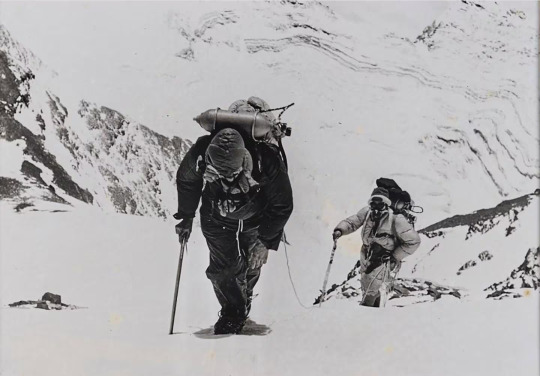
Why? Because it's there, of course. Why not?
And finally we get to the Metagamer. The gamer that plays away from the table as much as at it. The player who has a mounting pile of backup characters every single session. The player who loves to ask themselves "what if?"
This player loves all the rules, all the charts, and all the fluff. They resemble all three of the other players at points, but their focus is elsewhere. For them, the rules are a toybox full of interesting things to mash together. Character creation is less self-expression, more an experimental labrotory. Combat isn't a puzzle to solve, but a showcase to put the biggest, coolest thing in. A list of items isn't something to be discovered, but a catalogue of things to order.
The Metagamer cares less for the specific moment-to-moment gameplay or optimal solutions, but more for the thrill of making what could be the biggest or fastest or coolest things that could possibly be. So designing for enthusiastic Metagamers is less a choice of what systems are necessary, and more a practice at making sure that all systems are linked. Exploration can give things that are useful in Roleplay, and Roleplay effects Combat, and so on. A Metagamer will gleefully run away with the idea of fall damage being added to an attack, even if no fights ever happen at the bottom of cliff faces - merely because a 300-foot piledriver sounds awesome.

My next character is a cybernetic luchador bear that can deliver a flying lariat at mach two.
I would be remiss not to mention the Game Master as well - as the teacher, and most likely the purchaser of the RPG, they are the first player you must woo over to your system. But other than making sure the game is understandable and laid out in a way that is easy to reference, there's not really any focus to give to specific components - a GM may tend towards the "Gamer" or "Metagamer," but they are as likely to have traits from any of the player pillars. So to make that initial sale, the focus should be on clarity - "THIS GAME IS MADE FOR THIS PURPOSE." Once a GM knows what the game is about, they can then ask if it fits their style.

The magic that goes on behind these three panels...
Now, most players are a mix of these traits. Rarely does a Gamer not have an element of the Metagamer. Explorers can be as much a Roleplayer as a Gamer, and in certain scenarios players may be all four at once. But by choosing a pillar to focus on, or at least prioritise, we start to set our limits.
If a rule or system does not serve to cater towards our focus, and is not necessary for the game to function, it should not be given priority. Does a game for Roleplayers need a detailed list of poisons when a simple "poisoned" effect will convey the emergency? Does a system for Gamers need four pages of background lore? Do you really need that system for playing the stock market?
There is no perfect guideline for me to present here. But it is still good, every once in awhile, to hold your system at arm's length and say, "Who, really, is this game for? And does what I'm doing accomplish that?"
At the very least, it's helped me trim the fat a few times.
Happy creating, designers.
5 notes
·
View notes
Text
Currently Running: Historia by Mana Project Studio

Historia is a D&D 5E hack about telling stories in a dark fantasy renaissance setting with Anthropomorphic animal characters.
Typically, I don't run D&D and I definitely don't run D&D overhauls that I didn't design myself. However, Historia caught my attention for a couple reasons. First, I love fantasy RPGs that borrow heavily from history for their settings. Second, Historia changes how hit points and dying works to make the game more lethal. Lethal and dangerous combat is a must when I run a campaign. And third and finally, the art is absolutely gorgeous.

See what I mean?
When I saw Historia at Gen Con I was interested, but to be honest I dismissed it because it was just another D&D hack. However the more I thought about it the more it seemed to fit with my group, or rather lack thereof.
You see, a couple weeks prior to Gen Con my TTRPG group fell apart for social reasons and I was on the hunt for new people to run games for. The primary issue for me was that for a lot of people D&D is the default RPG and convincing them to try something new, and then teaching them something new, can be pretty difficult. Especially teaching a new game over discord. Historia shares all of its combat mechanics with D&D, so it hasn't been nearly as intimidating for new players to adopt. I knew the renaissance setting was something I could sink my teeth into and write an excellent campaign for. Also my fiancé is a furry, so I knew he would be excited to build a character.
At this point I've successfully gathered a group to play, and we've had our session zero. My players are all very enthusiastic and have all built their characters. We haven't played our first session yet but here are some of my thoughts so far.
First off, I'm not using the official Historia setting. That's not my style. I am however picking and choosing elements from it. I think the factions are compelling and useful, and can be easily slotted in to a homebrew world.
In traditional Dungeons and Dragons, hit points are a measure of how much physical harm you can take before you are downed. Historia treats hit points quite a bit differently. In Historia Hit Points should be considered a measure of how ‘rattled’ a character is. Because of this, the GM might dish out damage as a result of particularly stressful situations, experiencing horror, or generally doing difficult things as well as in combat. When a characters hit points reach zero they suffer a level of exhaustion. Every time you are hit afterwards you also receive a level exhaustion. In Historia reaching tier six exhaustion is what kills you, rather than running out of hit points. I've also incorporated exploding dice to enhance the randomness of the violence. Historia also has a chart of permanent injuries PCs can accrue. I personally really like this approach, it enhances the value of hit points as a resource and I think it will heighten the tension of the game. Permanent injuries also make sure that players will always second guess any potential combat encounter, heightening the value of role play focused solutions.
As we went through and made characters I noticed some issues. Historia was developed by the Italian company Mana Project Studio, and its clear that on translating to English there was some issues. Several abilities and mechanics were very confusing to parse out. There were also some pretty significant typos. It is especially disappointing because the game book as a whole has a very high production value! Its well organized and down right gorgeous! But the poor proof reading can make character creation a bit of a slog.
All told though we figured it out. Made calls on some confusing rules and moved on. Session 1 is coming up this week and I don't think I've been more excited for a campaign in years! I certainly haven't put this much effort into a campaign in years. I am excited for session one, and it sounds like my players are very excited as well!
#ttrpg#d&d#dnd#Historia#d&d 5e#d&d homebrew#ttrpg community#ttrpg art#mana project studio#TTRPG blog#Ziphos' Worlds#Historia Campaign Blog#anthro#renaissance
4 notes
·
View notes
Note
D&D?! ugh I'm so jealous hehe. I'd love to know about your character and how you play them.
(literally take your time 🥺)
I'm patient, I promise.
I'm currently playing in a campaign as I Paladin half elf nicknamed Rabbit. He only shared his name with people that want to be truly a friend to him. The party hasn't sold him on that yet lol. Gotta make em earn every letter y'know?
I really appreciate you clearing up my head, I was just like fuuuuuuuck lol 😂 you're very sweet.
Um, also, when I noticed that you were pretty engaged with Lauren, I stumbled upon your audio with the low vibrations. I love your voice too. You both have the prettiest giggles 🥺
Ahem... So yeah hehe I was listening to you both back and forth, one after the other. It was so nice 🥵
Now I wanna play with you in a completely different way!
🐻
so yesterday we were doing a Christmas themed homebrew oneshot where the four of us were reindeer lmao. it was a lot of fun and I'd never played a rogue before so it was a good change! (we were assigned deer lmao)
the long campaign im in is another home-brew but this one the character is all mine!
she's a half orc ranger named shinar and I am trying so hard to play her as more standoffish but it's hard (it's my first ever campaign so I'm still learning). and she's a chaotic neutral because that felt like the easiest way to merge how I want to play her and how I am playing her.
our party are called the pussy riders because we have a stolen tuk tuk wagon we named the pussy wagon 🙂↕️ it's a great party and our gm has sooooo much patience considering we're fumbling around in her custom world.
it's not a problem at all. i am a champion overthinker and have been affectionately dubbed an over thinking weenie by an anon haha
thank you! i recorded my most recent audio a while ago and forgot about the little giggle until I posted it 🫣
🤭🤭
2 notes
·
View notes
Text
More Gaming Nerding: A Tale of Two Fairy-Obsessed Trans Boys
Because my brain is still obsessed with game neepery I'm going to talk about my two currently-in-play characters, who have rather a lot in common despite being extremely different and clearly I am working through some shit right now.
Which means I sort of want to compare them and compare the things that can be done with their game systems, which will include both character commentary and more systems neepery.
(Note to people who are in these games with me: there are things in this post that haven't explicitly come out at the table. I don't care if you know them, but if you don't wanna know this is your warning spot.)
This is, for the record, a lengthy ramble about trans characters, the specific bits of trans experience I am prodding at with each of them, and the ways the systems in which I am playing them constrain what I can do with them and how I choose to do it.
Character #1 (in play since 2020), the catboy bard: Daniel Thomas Josephs. Danny is in an urban fantasy game run on the Deliria system; his universe is The Modern Real World with a secret parallel world full of magicians and fairies. Danny was a trial lawyer once upon a time; now he's a deliberately unhoused street musician (in theory; in practice he is between jobs because reasons, more on that later). His game very deliberately engages (on occasion, not all plotlines) with real world issues, because it is set in a variant of the real world; our current plotline involves trying to get justice for a police brutality/"resisting arrest" case and resolving questions of possible police retaliation. (Former public defender has ALL THE OPINIONS.)
Character #2, the fey-touched lunatic (in play since 2023): Celyn Bettws. Celyn is in a D&D game, homebrew modified, set in a lovingly detailed fantasy world created by the GM and his brother. Celyn is a farmboy who expected to spend his life being a diplomatic liaison between the humans of his village and the local fairies but who due to a sequence of circumstances left his hometown and eventually found the Plot; he is a rogue (variant arcane trickster with fey-based magic) with a dip into cleric (his god is the patron of hope, luck, the theatre, chaos, trans people, and the protector of the reckless and madmen, to hit the high points of things most relevant to Celyn specifically). This game deliberately does not engage with real world bigotries directly as a matter of "we are focusing on heroics not arguing about whether a girl/Black person/queer person/etc. can be a hero".
Both of these characters are trans men. Danny is a trans man in the real world, with a history of navigating the complexities of identity there; his pre-transition self is literally a Missing Person report. (This is on his character sheet.) Celyn is trans in a world where that's a normal, if uncommon, thing to be, where the trans man who originally mentored him couldn't relate to him not because of differences in trans-related trauma but because he was an Establishment Guy Devoted To Order and Celyn is ... not.
Both of these characters needed external help to crack their eggs; neither has the 'I've always known' narrative that is often assumed for trans people. Danny got blessed (or cursed, depending on how one looks at it) by a fairy with a gift of truth sometime in his early thirties, which unraveled the life he had built (on top of his burnout from public defense work, known to chew people up and spit them out). On the other hand, Celyn's experience of puberty was so traumatic it took a literal miracle from his god for him to survive his teen years; these days he's prone to telling people that the god of chaos brought him peace, and sometimes those people have the sense to worry about that. :>
Both of them have interactions with questions of sanity. Danny is, in fact, perfectly sane (though increasingly weird as time goes on), but his egg cracking directly led to people concluding that he had lost his mind. (His mental hospital trauma is directly related to why he hates sleeping under a roof.) On some level, he is engaging narratively, at least in passing, with the real-world trauma that comes from people assuming that to be trans is in some way to be mentally broken. Celyn, who has no experience of transphobia, is in fact actually mad; as he said in play once, he's familiar with pain so overwhelming it induces madness. "Mine is different than his," he said; the miracle that saved his life gave him the tools to accept and live with his dysphoria, both physical and social. It doesn't make him sane; he is in fact batshit loopy enough to come all around the sanity wheel and come out Differently Sane, perfectly functional but definitely not operating under the same narrative model as other people.
Both of these characters are musicians, now I think of it. Danny's life is built around it, not only in his choice in employment but also in how he understands and works magic. He is a skilled and charismatic performer on the violin, a quite competent vocalist, and is learning several other instruments. Celyn plays a frame drum, which is half "for ritual purposes" and half "oh gods I need something to fidget with"; this is important to him but not core. Rather than a performer he is 'competent session musician'.
Celyn's story is "what if the skills I have had to learn to manage my dysphoria were essential to being a hero". He is built around two traits: "fairies like me", and "my dysphoria is so bad it nearly destroyed me". While I have plans to develop him in ways that will let him turn off the dysphoria for a while (all trans people should get to have a little shapeshifting, as a treat) I actually can't give him the sort of genuine cure that Danny got because it would break him; his entire life since the age of twelve or so has been shaped around dealing with this particular thing that literally drove him insane and everything he is is built around that core like a pearl is built around shit and tapeworms.
Danny's story is "what if coming out and being myself destroyed my life". He was a full adult, with a life, a job, and all those things going on when he realized that he needed to transition. His backstory is about the things that he lost as he became authentic, and his arc in game has been very much about how this magical world he has discovered enables him to be even more authentic as himself: not only enabling a physical transition, but letting him learn the things that he was unable to learn from his upbringing, finding a love that he would never have imagined (partly because his sexual orientation is "monsterfucker", apparently, and there is a shortage of people with interesting teeth and tails in the world that contains only humans; yes, he has been to a furry convention now), eventually his transitioning a second time, this time into a nekomimi (catboy).
Dysphoria is not a substantial part of his narrative. The most overtly we have engaged with dysphoria for him was a) he traded a recording of himself singing (as a mezzo) to a fairy in exchange for something that he needed for his magical physical transition, and the party had never heard him sing before despite him having those skills, and b) after one of the times he blew up his life and had to be reborn (this time coming out not merely as a trans man but as trans fae) he spent a while complaining that two-leg balance was bullshit and why did he not have a tail. (He has a tail now.) He got a magical transition (with side effect of occasionally turning him into a cat - but at least it was a tomcat!) in our first adventure, and has been since exploring new and exciting ways of blowing up his life and rebuilding it and fully expressing who he actually is with fewer and fewer limits imposed by other people's expectations.
And of course part of that decision - of Danny getting a fully effective treatment for his dysphoria and Celyn not - is mediated by the game systems they're in. In Deliria, it's possible to get the shapeshifting power that Danny has; meanwhile, in D&D the options for deliberate character development are strictly channeled, only available at level breaks (of which there are a limited number), and at least somewhat focused around applicability to combat. So now I'm going to dig into some systems and talk about how that works for character development and the different ways that it's possible to explore fairy-obsessed trans boys within those game mechanics.
First the D&D, as it's more familiar to a broader readership: within a strict class-level system character development comes in a sequence of punctuated equilibria. Powerups happen under player guidance when there is an opportunity to take a new level; those levels have set contents such that how the powerset develops is fairly consistent over time. Levels that contain feats have the opportunity to do more character development and customization, but since a given character only gets so many feat choices, and many of those feats are geared towards increasing combat effectiveness, there is a structural bias against taking too many feats that are Interesting To The Character when there are Hits Things Better/Harder/Faster/More options available.
I did not build Celyn optimally for combat purposes. For example, his constitution score (determining hit points) is human-average, while your "normal" adventurer puts points into con. But not only is Celyn a little twink of a guy, he binds more than he should for his health, and that absolutely fucks up the endurance. (Reminded of a tale Oldest!kid told of a trans guy in the band who forgot his binder one day and was asking the other people in his section, "Wait! Is that why you all have SO MUCH AIR?") His low-for-an-adventurer constitution isn't just about tweaking for other stats, it's about dysphoria. Likewise, I am not going to be taking his feats optimally for combat purposes (he is a different sort of menace as well as being a little stabby guy); my plan includes specifically that at fifteenth level he will take a feat that will let him get the power to cast the Alter Self spell at will. (Which has combat effects, and other roleplay and plot-affecting effects, and is fun; it's not just about the dysphoria management. The dysphoria management is why it's required for the character, though.)
(I am not taking 'alter self' as a spell because, among other things, he would want to blow all his spell slots on keeping it cast as constantly as possible. Because he's not actually sane, and he's genuinely in a lot of pain. I took my own experiences of "perception-based dysphoria so bad I couldn't leave the house without meltdowns because people are Seeing Me Incorrectly" from when I was pregnant with Oldest!Kid and cranked them to eleven, yes I did.) Alter Self is a low-grade shapeshift, and when he can do it at will, yes, he can turn the dysphoria off for as long as he's holding the spell. Which will make him very happy. And it's another step in "here is a skill that helps with being a hero" as an arc.
What is possible within the system to address Celyn's issues as character development: taking Alter Self as a spell at a rogue level break that gives me second-list spells (not the plan); this fifteenth level Alter Self at will feat trick (the plan). Other options include magic items that do body modification or some sort of plot event to do things, which theoretically exist in-world but I am not aiming for because I am not looking to remove his internal action engine, just give him more tools to manage having it.
Now for Danny.
Danny is built in Deliria, a system in which there are core stats (either 3 or 12 depending on whether the game is running high-detail; we run high-detail), skills (broken out by category, each category has a variety of subskills in the detailed version), and various forms of powers (magical skills, innate magical abilities, etc.). Basic competence is stat+skill; stats range 1-10 and skills 0-7, so anything a normal human character does ranges between competence of 1 to 17.
I wish to note that when we started game, Danny was the most combat-capable player character. He had an agility of 5 (human average) and a knife fighting skill of 1 (so 6 to stab things). AND the manipulation/street smarts/force of personality skillset to have "use the fact that he knows how to hold a knife menacingly to convince people that nobody in their right mind wants to get into a knife fight" at an effective base skill of 11 (11 is right around where a starting character's strong skills probably land unless someone built a much more extreme core stat array than I did). (He had a 9 in doing flashy knife spins to back up the "you don't want to get into a knife fight here, nobody wants to get into a knife fight" thing.)
Danny is still the most combat-capable player character, mind, because he's actually pursuing those skills. (When he was a girl in a conservative Christian family one of his brothers got into trouble for trying to teach him how to throw a punch and he has never forgiven his mother for this.) Not only is he learning Western swordsmanship from his boyfriend (who has been studying the blade for several hundred years), he's studying Leopard-style kung fu (because those strikes work really well with claws), learning to fight in animal shapes, and will be doing Japanese swordsmanship training with a sakura dryad when he solves his "can't leave the house" problem better.
Oh yes Danny also has problems leaving the house right now. Unlike me (and Celyn) these have nothing to do with dysphoria and a whole lot to do with the fact that his shapeshifting power has glitched in such a way that he can no longer turn into a male human and when he goes out with his fangs, claws, pointy fluffy ears, and GIANT FLUFFY TAIL, that can cause a certain amount of social difficulty in Seattle in 2021. (And while he can turn into a female human he would really rather not without a specific reason, because why would he want to do that? He spent forty years there and it was not fun for him.) Practical issues! He has practical issues here! Being a trans fairy isn't all fun and games! ... just mostly.
Now, because Deliria is an experience-buy system, character development works like this: as experience accumulates, it becomes a pool of resources that one can spend to buy and improve skills and abilities. So improving Danny's fighty skills, for example, has been a matter of having the xp to buy the skill and having enough in-game time pass to raise it. (So he has gone from knife and evasion 1 to knife 1, sword 2, evasion 2, kung fu 1, fighting in animal shapes 1, and both his agility and strength have each gone up by a point, to 6 and 5 respectively. He is still not actually good at fighting but he is working on it!)
So. Shapeshifting. Shapeshifting is a magical power that comes at four levels. When we did the plot that let me buy it, I had saved up enough experience to get it at the second level, because getting at level 1 (either two forms - which would in his case be "male human" and "female human", or "the sort of basic body mod that would fix the dysphoria but not provide amusing plot hooks") did not provide plot hooks; level 2 gave me three shapes I could control (male human, female human, cat). We set up the plot that let me buy this power, I saved up my xp to purchase it, and when we had run the plot, I spent my points, and there it was, the power. And since this was the first plot we ran, I did not have a long time playing him as "I would stab a guy to get a shapeshifting ability", but I have absolutely continued with this exploration of identity via his shapeshifting prowess as it has improved. He will describe his shifting as "I can turn into anything that is true of me, and I was an English major, I have a keen grasp of metaphor."
The "I would stab a guy to get a shapeshifting power" was something that was on his character sheet from day 1, for the record; Deliria character generation includes a section for "obstacles", "passions", and "secrets", for basically generating plot hooks. This doesn't provide mechanical rewards for dealing with them, they're basically tools for the gamemaster to produce story with. (My understanding is that games running on the Powered by the Apocalypse systems or similar things often have in-game narrative reward for this sort of roleplay/personality setup, but I haven't played them. We've got a copy of Avatar: Legends, which I believe is a PbtA variant, that I got Older!Kid and I should read through it and figure out how that goes.)
The obstacles/passions/secrets is, I'd say, a step up from current edition D&D's bonds/ideals/flaws in terms of its relevance to the character in play but not actually something that can land at the table unless it's actually brought out, unlike, again, systems where using one's particular personality gimmicks gains more strength than using things that don't vibe with personality gimmicks.
But anyway.
Two trans characters, some substantial core similarities, and very different development patterns. Partly because telling the same sort of story twice is boring, even if I'm working on some similar core stuff. And partly because I could look at Deliria's system and say "shapeshifting is possible, I will make it a character goal to get there" and spend the points to get that as soon as we did the work to get through a relevant bit of story, where Celyn has a harder road to follow because the ability that will give him a near-equivalent power is not "when the plot and your banked experience let you take it" but "when you achieve a very high power level".
I had expected getting Danny the shapeshifting power would take longer, and I'd have had more time exploring him living in a wish-fulfilment-possible universe without actually getting his wish. (Then we had the option to pursue a literal wish for our first plotline and he went right at it.) It's possible that that's part of why I built Celyn, the later character, so heavily around his dysphoria; while dysphoria itself was not a major part of Danny's background as a factor, he didn't actually have to live with it for all that long after his conception.
Danny was also built as a character about my age, which means that he can explore the "what happens when my life catches fire because I was authentic" storyline in a way that Celyn, at age ~23, cannot. Danny's experience of adolescence was tangled up in his conservative upbringing in ways that heavily masked his transness from himself and from others; he dissociated into being a Good Girl for at least some values of Good Girl. (Very academically gifted, that kid, her family is so proud. Her mama thinks she'll be an amazing elementary school teacher someday.)
Celyn doesn't have the repression of a transphobic upbringing to push his realization of himself into adulthood; what he didn't have, before his god gave him peace, was the perspective to translate "I feel wrong and it makes me furious and self-destructive" into anything useful. He got his miracle in his teens, he stopped trying to rage into oblivion, and he got on with his life, keeping a list in his head of the things that set him off into the bad kind of crazy so he can not do that again. (Hair too long. Being seen as a girl. Having his miracles attributed to the wrong god. Being seen at all when he doesn't feel like himself. Person he has a crush on getting knocked out in a fight. Etc.) He's done the work to make himself into someone who is, generally speaking, kind, amiable, accepting, and calm, enough so that the fact that that is a fairly constant process of navigation for him is gloriously invisible. (And if asked about that he will just pull his holy symbol out on its chain - the one with the paired theatre masks, one laughing, one crying - because it does, in fact, from his perspective, explain everything.) He will be good, even though there is in him that which wants to lash out at the world.
(He has a whole lot of complicated thoughts about the part where the world going all to hell around him means that the part of him that is built of rage and pain gets to go for walkies a whole lot more than it used to.)
... I think that's enough personality analysis of TTRPG characters for now and I am done at midnight, not three in the morning, this time!
#gaming#frightful exercises in nerdery#three lunatics and a paladin tag#catboy bard tag#trans issues#content created by me
2 notes
·
View notes
Text
I hope you don't mind the @ @cavernanomaly but i didn't want to take over OP's post.
Our Eberron game is our team (known as the Super Friends because none of us could come up with better) working to be a big name hero team in Sharn. We're currently C-Tier Heroes. Superheroes are a relatively new concept in the world, and are only in a few countries that have superheroes over adventurers. Vibes are very much Golden Age of Comics with occasional jokes thrown the way of the edgy 80s/90s reboots.
The party is:
The Beast AKA Johnny "Hammerhands" Price (Shifter Barbarian): veteran of the last war. He was a semi-popular boxer before enlisting in the Breland military, and now that he's home he's struggling to pay rent on his gym. Almost everyone knows that The Beast is Johnny due to how shifter abilities work + us having a Plucky Young Reporter (his name is Figs) following us around covering what we do.
Vax AKA Shady (Half-Elf Warlock): a doctor with heavy decay/bug motifs (with a homebrewed patron). She's fairly reserved with details about herself, but we do know she woke up one day with an entity known as "the Doctor" in her head and a rash developing on her arm, and this entity is somehow tied to the long dead House Vol.
Psion AKA Ethan Terrance AKA the Betrayer (Human/Dhalkyr Sorcerer): Ethan is another veteran of the last war for Breland, who found a dying Dhalkyr named the Betrayer and offered to let him take over his body to survive. This is entirely due to Ethan wanting to do something good with his life and they both are currently sharing control of Ethan's body until the Betrayer fully takes over. They're very much a Martian Manhunter type character.
Gh0st AKA Kaine d'Cannith and AB13 (Human/Warforged Warlock/Artificer): dragonmarked member of house Cannith who walked away during the war due to being sick of war profiteering & a warforged he found broken down and abandoned in Cyre. Ironman kind of situation, only the 'suit' is the warforged that only really started working again after the human accidentally created a mental link between them. Kaine's recently rejoined the Cannith South house due to a need for resources (and the house needs dragonmarked members desperately)
Most of our adventures so far have been fairly silly and a lot of the Big Bads have given the GM excuses to subject us to the worst puns imaginable. First arc we had to break into a House Kundarak vault to steal a freeze ray before a member of the house could sell it off to an Ice themed villain league that had recently started up in Sharn. Second Arc, we had to rescue an up-and coming politican from being forced to marry a bug villain hellbent on taking over the whole city with mind control drugs & an army of Kruthiks.
(Our GM actually made little front pages for us at the completion of each arc, with our very own Sharn Inquirer owned by James Jonald Johnson)
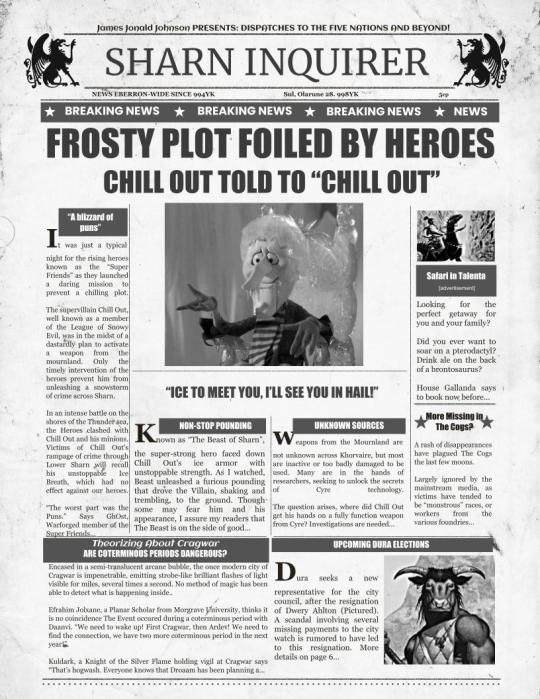
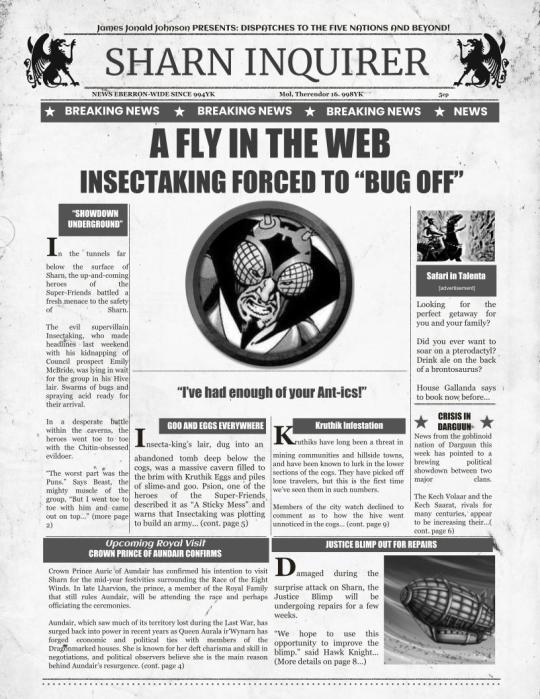
Currently we've had the misfortune of ending up in the middle of a fight between the Kech Volaar and Kech Shaarat, two warring goblin clans trying to re-establish a long dead empire- entirely because Vax was chosen by the blade of one of its leaders. Along with this, we also have what seems to be a member of House Vol trying to steal the blade from us.
So we're currently outside Breland trying to Solve that Problem while working alongside a group of goblins known as the Word Rangers (they are Just the Power Rangers) to try and gather the rest of the magical items tied to the dead empire before the more violent of the two clans OR the remnants of House Vol get their hands on them.
It's honestly been a real fun time and is easily one of the highlights of my week to see what the GM has set up for us for the game.
4 notes
·
View notes
Text
Creature Corner: Undead part 4
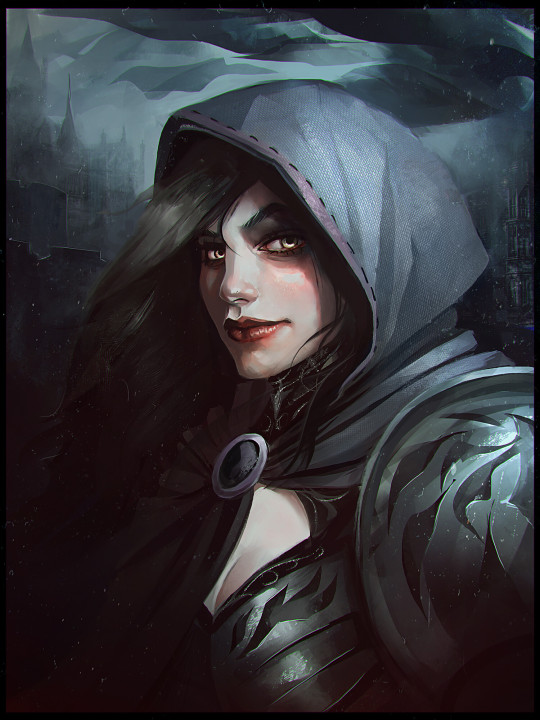
(art by Anna Marcano on Artstation)
Inspiration
Maybe it’s the edgy sexy vampires, maybe it’s our love of monsters and undead, maybe it’s the unliving power that undeath typically promises, or maybe it’s because some of us identify with creatures forever outside of mortal society, but let’s face it, there is a delight to be found in playing as, or at least having a character that taps into the undead.
Today we’ll look at the ways that characters might be inspired from the concepts of undeath and realized in the game setting!
Perhaps the simplest way to include undead inspiration into your character is to specialize them in necromancy! Now, this comes in two flavors. The first being dedicated necromancers, which includes those that get undead-animating spells on their class spell list either normally or through archetypes. Necromancer wizards, nongood clerics and oracles (particularly with the death domain or bones mystery), and even archetypes like gravewalker witch and reanimator alchemist (though that last one may have difficulty controlling such undead). Additionally, the spiritualist class has a phantom, which while technically not undead (aside from one archetype), does have that ghostly vibe to it. Archetypes that also grant phantoms, like death druid or ghost rider cavalier are also good.
The second way is to play character with the taint of necromancy in their blood. Namely sorcerers and bloodragers with the undead or ectoplasm bloodlines, but other archetypes that can gain a bloodline or tap into undeath, like the deathtouched companion for a companion-having class.
The next method one could use is to actually play an undead creature. Of course, some GMs may be opposed, but it is possible to create undead playable options using the Race Builder rules from Advanced Race Guide. (and with the skeleton ancestry and playable undead archetypes in 2nd Edition, there’s plenty of lore precedent for it). However, if that doesn’t work, you can always play a quasi-dead character like a dhampir or a homebrewed death-touched ancestry, perhaps drawing upon the mortics from late 1st edition and 2nd edition.
But perhaps you don’t start as the living dead? Perhaps in a higher level game or later in your career your character dies and rises as a sapient undead? Certainly the path of the lich, graveknight, and siabrae are options, but any sapient undead is an option. HOWEVER. Much like lycanthropy, a lot of powergamers might consider undeath to be an easy path to having an unstoppable or at least overpowered character, so use this option in moderation with players that are willing to roleplay dealing with the struggles that their particular brand of undeath may bring.
Of course, not every character inspired by the undead wants to be or control them. Some may wish to destroy as many as possible. Certainly most paladins and other divine casters have an interest in such things, as do mediums seeking to put the dead to rest, and there are countless undead-slaying archetypes out there in both magical and mundane classes, such as white necromancers, undead-hunting slayers, and more!
Of course, sometimes the undead don’t inspire an actual class or playable option decision, but may have otherwise influenced the character themselves. Perhaps your character survived an undead uprising, or a close encounter in a crypt they explored on a childhood or drunken dare? Maybe they were raised in a necropolis where the dead walk alongside the living, or maybe they had an uncanny mentor in a deathless being? Your options are limited only by your imagination here, so start imagining!
That will about do it for today, but tomorrow, I’ll share some final thoughts on the creature type before we wrap up for the week.
10 notes
·
View notes
Text
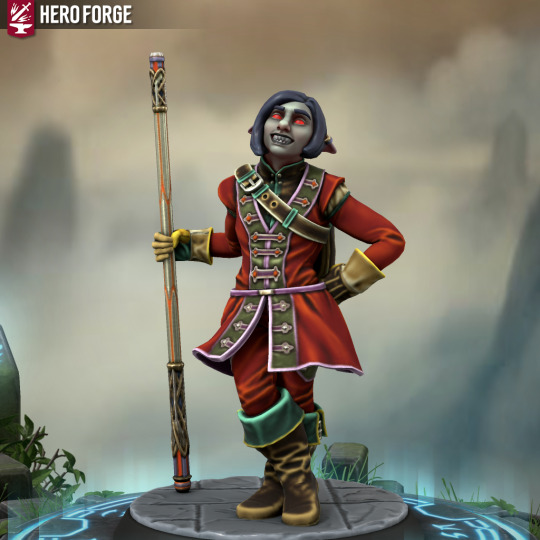

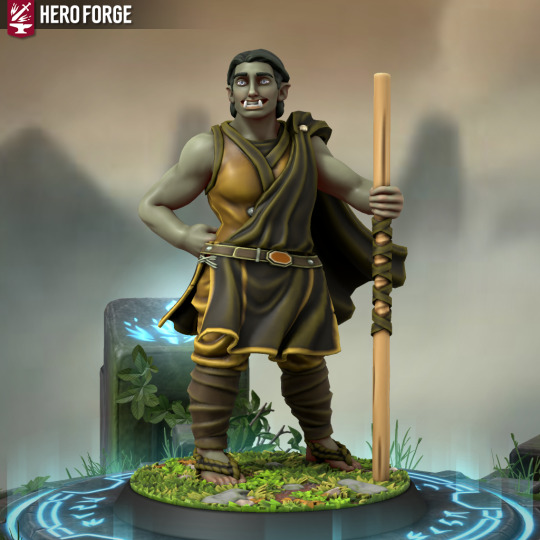
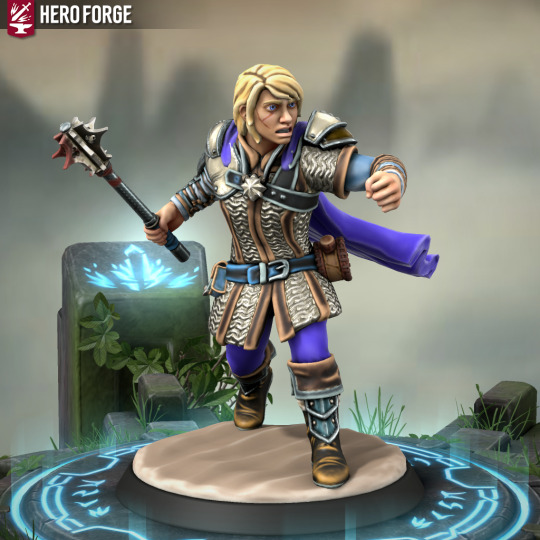
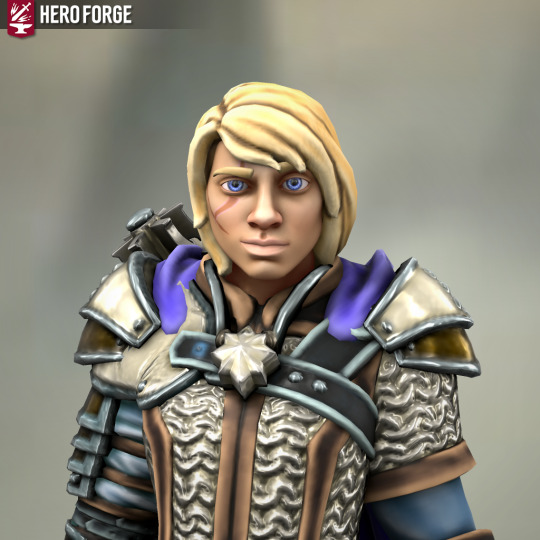
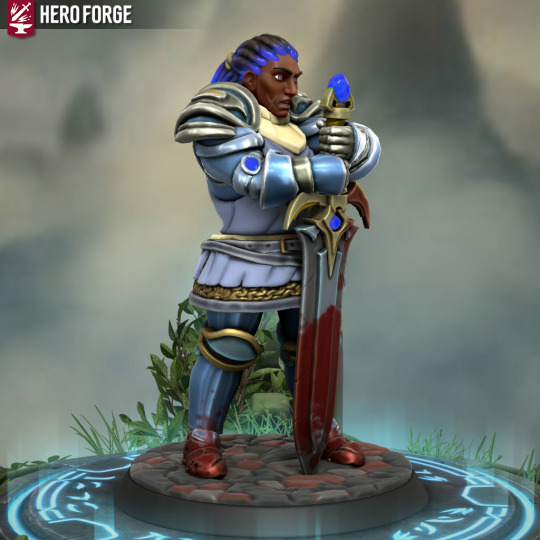

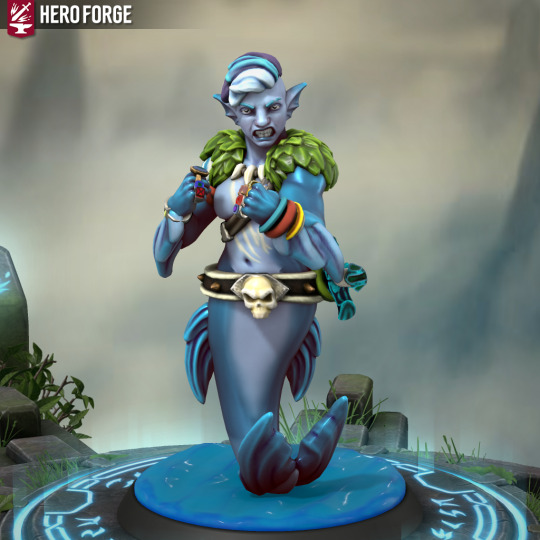

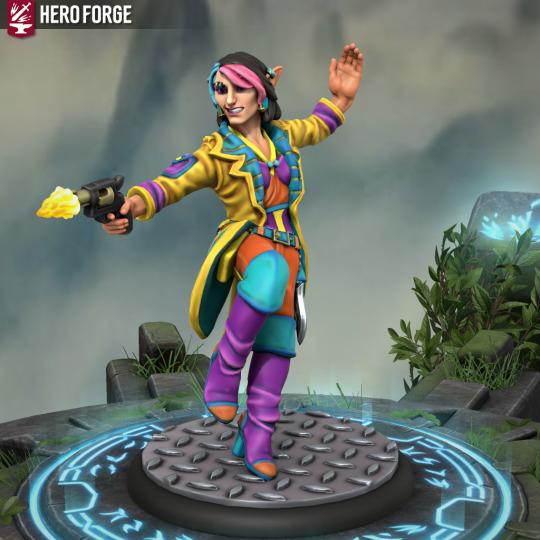

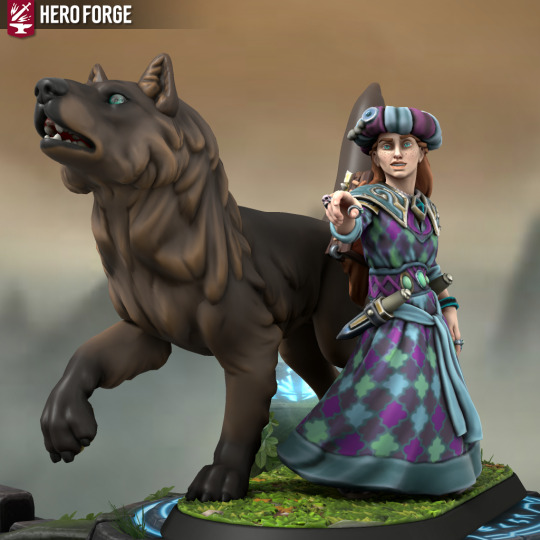
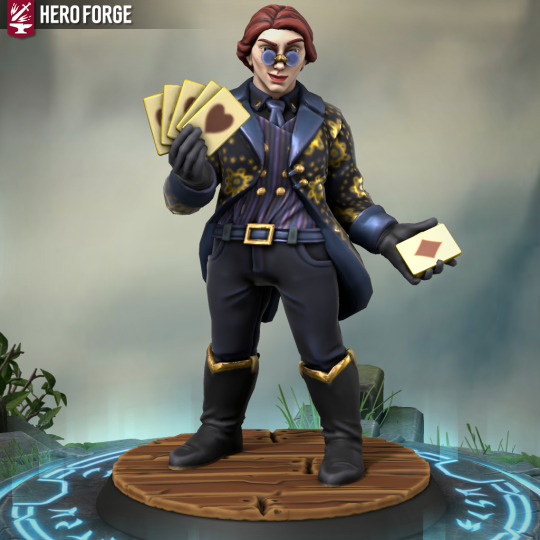
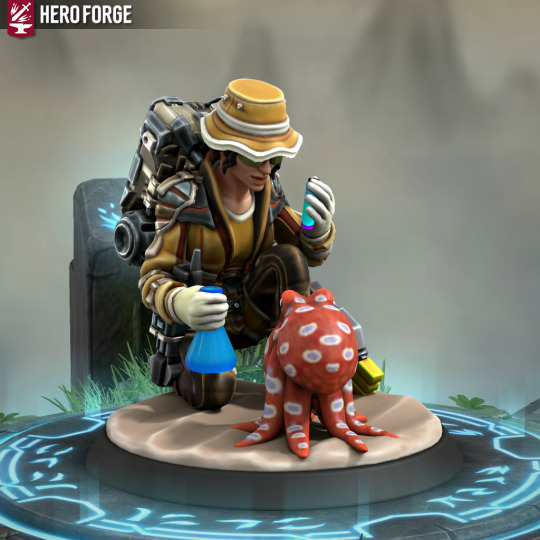



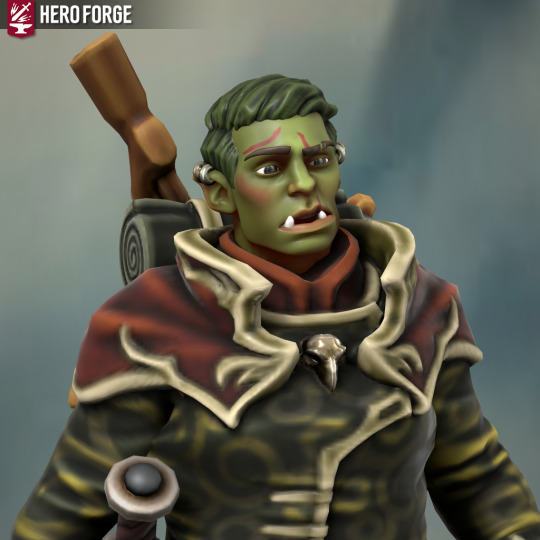
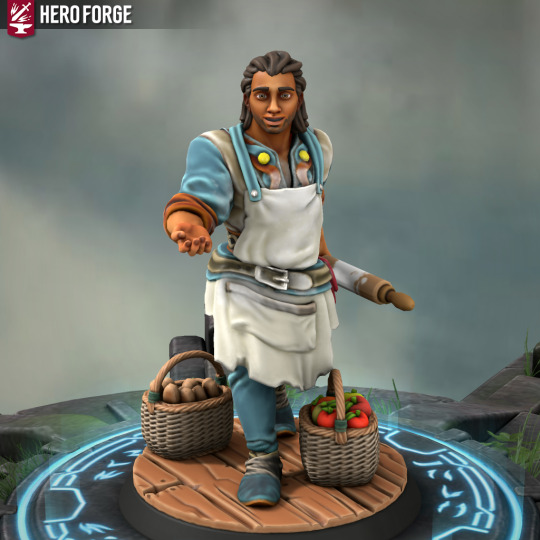
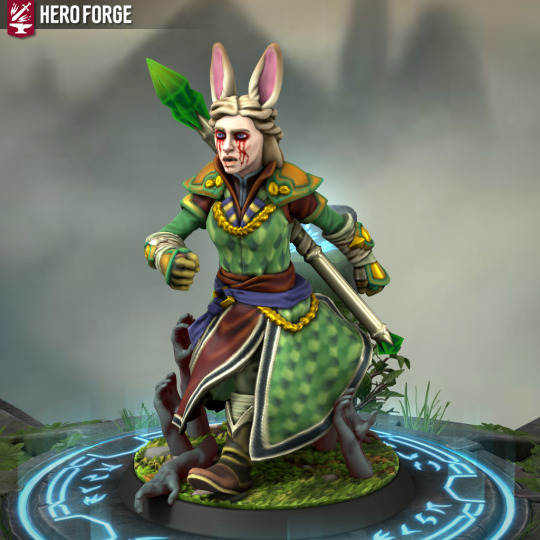
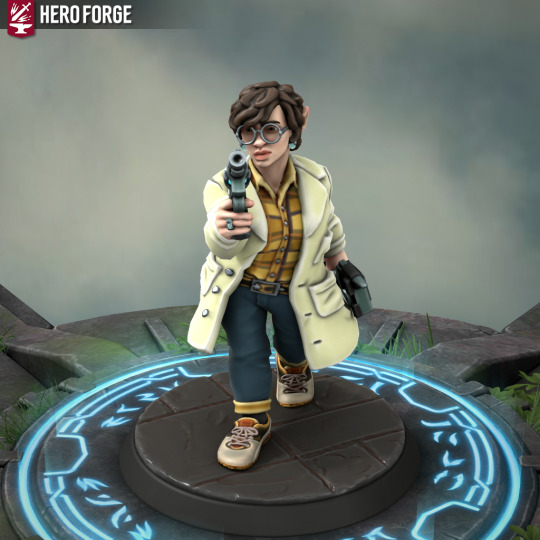
Made little Hero Forge guys out of every single character I've ever played at least one session of in a TTRPG. (The ones with closeups I've played for more than one session.) Details under the cut.
Top Row:
Literally Just Terezi Pyrope, Pathfinder; half-orc Investigator Made for a Pathfinder oneshot wherein my friend was playing a Vriska-inspired character. I feel the need to disclaim that we did not kill or maim anyone out-of-game. I don't even remember if we killed anyone in-game because I remember it being pretty puzzle/trap-focused?
????; Ryuutama; Crafter/Autumn Sorceress I'm kicking myself that I don't remember her name. She was a seamstress, and in the specific world we were playing in we were the descendants of space colonists, so I decided her ancestors would be from a culture with really pretty fabric patterns.
Ylva Truehand, D&D 5E; half-orc monk. A herbo if ever there was one. Accidentally became the figurehead of a coup d'etat at home and had to Leave Right Now Immediately. We only got to the part where we all met at an inn before outside circumstances meant the campaign fell apart.
2nd Row:
Katja, 3.5E D&D; human cleric prestige class (maybe a Radiant Servant of Pelor?) My very first TTRPG character! I played her in a high school friend's historical-fantasy-inspired homebrew setting campaign he ran one summer in college. She was meant to be an army doctor for Fantasy Imperial Russia and we were doing an escort mission across a desert that was, iirc, disputed territory between three superpowers? Mostly I remember killing a lot of ninjas and then stumbling across a magical oasis where the water was magically pacifying, finding the mineral that was responsible for this effect, grinding a bunch of it into powder, and then making our GM's life a living hell by slipping it into NPCs' drinks whenever we wanted something from them.
3rd Row:
Safira, Stewpot; Paladin/Artisan. This one's pretty obviously an expy of my angel OC Vehuel. Stewpot is a game about retiring from adventuring so the character concept for her was "Holy warrior chosen by prophecy to kill a great evil with a magic sword; accidentally fell in love with the great evil. Eventually killed it anyway. Deeply traumatized."
Yarrow Tunneler, Mausritter; Acorn sign wireworker. Yarrow came out so cute here! A lot of stuff in Mausritter is randomly assigned and I think her class was one of those things, but I liked the wireworker thing (basically she's a mouse electrician) and one of her starting bits of equipment was a spool of wire. There weren't any good wire spools on Hero Forge, but I managed to make a battery-looking thing for her to carry around on her back.
Esca Glowfin, Ocean Tides; mermaid. Yeah so the game wanted me to choose whether she was going to be a mermaid or pirate but I wanted to be both so I made it work. The actual character concept I had in my head does not look much like this but turns out one of Hero Forge's weaknesses is deep sea benthic horrors with needle teeth. So I just made her hot. Sorry, Esca, you probably deserved better.
4rd Row:
Minu Darzi, Shadowrun 5E/Definitely Not Shadowrun At All; elf face. This one's an expy of my demon OC Nisroc, but like, a very very tiny sliver of Nisroc's whole schtick. I tend to describe her as "what if Grendel's mother was a shitty grifter who wanted to be an influencer?" but she shoots a lot of people so I feel like her sphere of influence is powerful but limited to like. Influencing people to die.
5th Row:
Royse, 5E D&D; Aasimar rogue. Another Vehuel expy, this one much younger and less traumatized. Royse was made for a West Marches group I didn't really vibe with. The one session I played was great but the out-of-game downtime stuff felt like a part-time accounting job and I don't have any interest in accounting. Anyway Royse was fun and she was gonna be a Swashbuckler.
Pandora (& Scylax), Worlds Without Number; mage (Necromancer/Beastmaster). For the oneshot group I'm part of we've started doing a test combat session at the end of Session Zero to make sure our characters aren't going to die immediately, and after that our GM decided we should be using the Heroic rules. In the combat trial, Pandora used her one (1) spell slot to mind-control one of the wolves that were attacking us and it killed a bunch of the rest of them, so given the opportunity to add another 1/2 mage specialization I picked Beastmaster and gave her a wolf. I really liked some of the lore for this game but oof, it's super unforgiving. (I think it might be a good starting point if you wanted to play a Locked Tomb campaign, though?)
Zamira the Magnificent, Blades in the Dark; slide. This character was a disgraced stage magician who accidentally killed her assistant (maybe sawed them in half?) and I liked the concept but our Blades in the Dark party really didn't end up doing much RP, even though we are a very RP-heavy group; I kind of wish the game had facilitated it more.
6th Row:
????; Tempus Diducit; Weird Scientist. Tempus Diducit is a no-prep chaotic game about a time travel crisis where a lot of things are randomized; mostly I remember there being superintelligent octopi and making strong acids, and also me having a lot of very annoying ideas involving my specialized knowledge of both cephalopods and chemistry.
????; Subway Runners. I remember very little about my Subway Runners character but basically this is a no-prep game where your character sheet is entirely randomized and every character is probably at least a little Done With This Shit because every Subway Runners PC is a gig economy worker whose shitty gig job is fixing an urban fantasy public transit system full of extremely weird shit. I think by the end of the session all our characters had cat ears.
Miriam; You Awaken in a Strange Place; marine biologist. Once more my specialized cephalopod knowledge comes back to bite me in the ass! (Also, this is the second Miriam on the list; 'Zamira the Magnificent' was a stage name.) YAiaSP is another no-prep chaotic game; you also get to make up all the skills your characters have, and Miriam was good at Identifying Marine Animals but bad at Working Under Pressure, which was great because they were in a locked submarine murder mystery and identifying marine animals was basically of no use whatsoever. I think in the end she failed a Using Scientific Equipment roll and then bluffed that she had actually gotten the DNA results to get the murderer to confess. This is unethical if you're in law enforcement; if you're a professional marine animal identifier it's still unethical but I think it's also kind of impressive. Only I forget if it actually worked, so maybe it wasn't.
7th Row:
Heshky, Pathfinder 2E; half-orc investigator. I have literally only ever played half-orc investigators in Pathfinder, which is very funny to me. [Edit: This is no longer true! I have a dwarf ranger now.] Heshky here is not much like the Terezi expy, though. He is an expy, but of one of my OCs rather than someone else's and his backstory is that he's a former mob accountant whose boss died in circumstances that were technically not his fault, so he had to leave town for a while. I would absolutely love to play him somewhere else; he was made for my one-shot group but we ended up stretching that Pathfinder one-shot out to like 5? 6? sessions and I got very attached. (If I played him again I miiight not start him out as an investigator though, because he almost died like 3 times.)
8th Row:
Zirane, I'm Sorry, Did You Say Street Magic, baker. ISDYSSM is a cooperative worldbuilding game so I kind of forgot there was a character I played in it, but apparently I did! This guy lives in a fantasy city and works at a cafe owned by some mystery person (possibly a vampire?) but he's not worried about that. He is good at baking, but likes experimenting with weird combinations of flavors, which sometimes means his extremely well-made baked goods taste regrettable.
Kjersti, Session Zero; war-witch deserter. Session Zero is a character creation/development game without character classes; it can actually be played solo as a writing exercise too! So I just kind of went wild here. I really like the concept I ended up with and keep meaning to post what I wrote up for her; over the course of the game she went from annoyed arcane college student to spoiled rich girl to army deserter trying to survive a magical war crimes-induced apocalypse and daydreaming about overthrowing her own government in no time at all.
Edie, Genesys; dwarf mad alchemist. The setting we decided on for the Genesys one-shot was cyberpunk fantasy, a bit like Shadowrun but if magic had always been in the world, so I decided to pull out one of my old, old LJRP characters (Ed Espis) and repurpose her. Edie grew up a third- or fourth-generation corporate citizen and very privileged, but when her parents died under mysterious circumstances and she was fired shortly thereafter, the company decided she had to pay off all the resources they had invested in her entire family so now she's broke and has to do crimes (petty) instead of crimes (war) to live. She ended this session by shooting a guy in the head but listen, he extremely deserved it.
6 notes
·
View notes
Text
RPG a Day 1-5
I figured it would be better to write these in chunks to avoid spam, so here goes the first five.
Day 1: First RPG I played this year
My regular group continued an ongoing dark fantasy hexcrawl using Beyond the Wall. We opted for BtW because it's a bit more empowering than other OSR systems and our group tends to get attached to its characters.
On alternating weeks, I was running a Traveller (Mongoose 2nd edition) campaign, which was the first time any of us had played the system. It was pretty short lived, but I think most of us enjoyed it (even if one player got screwed by the lifepath character generation) and I learned a lot about how to run a good Traveller game.
Day 2: First RPG Gamemaster
My first group was at the local library in a nearby small town. My dad found an ad for it in the paper and coaxed me to try it because he'd played D&D as a kid (I was 11 or 12 at the time). The GM was 19 and I thought he was the coolest person on the fucking planet for a long time. He was running a homebrew 4e D&D campaign when I joined, and the group was massive, like 8 players including me.
Day 3: First RPG I bought this year
According to DrivethruRPG, my first purchase this year was Maze Rats and Knave in March, both of which I poached from heavily for a homebrew OSR hack I ran a campaign of in April and May. Some good stuff in those, for sure.
I also got Stars Without Number as a birthday gift in January, and I feel like I've still barely scratched the surface of that book. It's super dense with information.
Day 4: Most recent game I bought
I backed the kickstarter for Nevermore after getting to play a oneshot of it with the designer as GM at Origins. It's supposed to come out in October, and I'm very much looking forward to it. It's a gothic horror RPG that uses playing cards for its resolution mechanic, and it has a very well-done gameplay loop
Day 5: Oldest game I've played
This may be a lame answer since it's still around, but Call of Cthulhu is pretty old as far as RPGs go (originally published in 1981). I guess I've only ever played 7e though, and that's not very old.
I've run and played old adventures, if that counts. I had a whole campaign where I expanded The Secret of Bone Hill (D&D adventure also from 1981). And my first time playing Tomb of Horrors (1978) was a homebrew 5e adaptation because Tales from the Yawning Portal wasn't out yet.
9 notes
·
View notes
Note
Out of curiosity, how happy are you with the balancing of the Vessel? I showed it to my DM a while ago as a 'hey if I had known about this at the time I would have liked to make that my character, what do you think?' thing and he was very unsure about it due to a lack of DMing experience, and another player straight up called it overpowered. Have you found it to be like that at all?
So here’s my run down of experiences and opinions on it
1: I have played a Vessel in 3 one shots now, tweaking them a little each time
2: I have run a vessel multiclass for a player for quite some time now, her party includes a monk and rogue
3: I currently place a vessel pc with another party member, we are the only martials, and with a sorcerer, druid, and bard
From my experience, Vessel does three things very well. Its tanks damage very well and it does solid damage. The choice of subclass adds great utility with a focus, either being a face or some tricky little powers or something like that to augment them a bit with synergies and such
For the ranger/vessel I run for, we are very late in the game and is consistently touted as the tank slower than her party but with great damage. Her subclass, Dire Bloom, along with her magic items have choice have kinda given her all that she could ask for. She can defend her allies, crowd control with her subclass or spells, heal a bit, and with various ranger plant spells for bonus uses. She’s a real cornerstone for solutions and can help with anything, very well rounded.
For the one I play, I am a Destroyer and my party member is a Dragon vessel. The sorcerer also has a 3 level dip into vessel. In this party, as the only martials, I think they stand great. They soak up attention and do well in combat, tackling problems before they hound the casters. We have been challenged plenty over time. Thematically, however, there has been some overpowering as the DM has stressed the very high side of the importance to the 3 vessels, notably the other 2 and not me lol. Our stories have a bit more sway and loose ends, not that the other characters don’t, but the baked in conflict of vessel and choosing narratively important entities has gravitated larger plot threads around them
Overall I have had good experiences with playtesting. A big issue with a lot of martials is a lack of versatility and utility. A wizard has endless options, a fighter does not. At my table and the table I sit at, we have stressed giving martials more things to do. My monk has additional ki features, my rogue has a homebrew system someone made called debilitates to spend sneak attack dice on special effects. In a party with just the 2 vessel martial characters, I have not felt anything out of the norm
But that is not what happens at all tables. Some tables make no concessions to martials and like them as they are. And that’s ok! My friends and I have just customized our game a lil with options for them. So mechanically this could pose a problem for your say, champion fighter and berserker barbarian, as a vessel can easily fill those roles and have tools to be something besides a sack of hit points
On the topic of being overpowered in general though, that’s fair, there are some places that could use fine tuning and I have gradually over time. But there will always be slightly unbalanced things
If you introduced the barbarian for the first time, people would call rage overpowered. If you introduced paladin auras and smites, people would call them overpowered. Same for rogue and monk evasion, just avoiding all dex damage on a success. Same if you suddenly introduced spells, especially the crazy 7th, 8th, and 9th level spells
Classes get plenty of defining and strong abilities, for sure, and that is a very fair concern
I’m so glad that you want to play the class! Your friends are not without good reasoning and I think your GM is beyond fair to be unsure of running a homebrew class. It sounds a bit weird to say, but as a person who has been playing for years, I think it would be the best to save your GM the worry and allow them to learn the vibe and flow of the game themselves before introducing something entirely new to the game
I hope this helps! <3
3 notes
·
View notes
Note
What system did you guys play Blueshift in if you don’t mind me asking? It looks like a ton of fun!
It was a heavily homebrewed take on World of Darkness, specifically Hunter the Vigil!! Our GM @biteghost did a lot of fiddling around with what we were allowed to do and also refit it for the setting for her webcomic, BACKLASH which you should be reading
#in fairness even when we play hunter its homebrewed#we play tabletops in a way that would make a lot of people upset to listen to we fudge so much#asks#no art here#blueshift
14 notes
·
View notes
Note
You and your rp partners doing a TTRPG?

//We are! Most of the character interaction is done here on tumblr, so you’ll see them talking a lot, but anything involving combat/intensive rolls is done in a TTRPG setting.
We use D&D 5e with a LOT of homebrew lol, but our GM’s are fantastic.
3 notes
·
View notes
Text
D&D ONE-SHOT
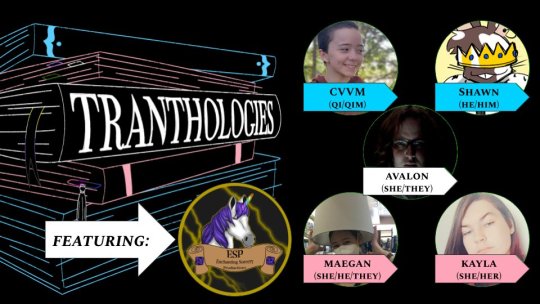
It’s a pleasure to announce that one of our lovely voice actors Avalon Willowbloom (she/they) will be running a D&D 5e Feywild one-shot on Saturday to promote our crowdfunding campaign!
The one-shot will be hosed by ESP - Enchanting Sorcery Productions, and will take place on SATURDAY MAY 27TH at 8PM EST!
https://www.twitch.tv/enchantingsorcery
The one-shot will be GM’ed by Avalon Willowbloom (she/they), a voice actor with Tranthologies who also voice acts a bunch with Faustian Nonsense. She likes the scary, silly, and strange most of all.
The players will be:
C.V.V.M. (any neopronouns) is an artist/voice actor for podcasts such as Tranthologies, The Domestic Life of Anthony Todd, and Station Arcadia among others. In qis free time, qi enjoys writing and drawing - and is working on an ever-expanding D&D homebrew world. Ey have been playing D&D and other TTRPGS for 5 or so years.
Shawn Tumbokon-Flowers (he/him) is a VA for various side roles in Tranthologies and larger roles across the [Listless] Network, including Nicky Dixon in The Children of Room 56. Recording out of Chicago, he’s been on many podcasts and even on live radio. He’s a fan of D&D, has been a GM for 6 years, and can’t wait to play for Tranthologies!
Maegan Fellner (she/they/he) is an actor who also sometimes writes, draws, and knits sweaters. Some of their favorite voice acting roles include Vela in Flower/Serpent, from Tranthologies, and Lady Luna in The Knight and the Sorcerer, from Unnamed Anthology Podcast. On stage, Maegan has played Celia in As You Like It, Benedick in Much Ado about Nothing, and Olive Ostrovsky in 25th Annual Putnam County Spelling Bee. As a huge d&d nerd (and fan of fantasy nature), he's excited to be participating in this one-shot!
Kayla Bell (she/her) is one of the writers for Tranthologies. She usually infects everything she writes and does with horror, but always with a smile on her face.
This one-shot is going to be a whole lot of fun, and we hope you tune in to watch!
But remember, the one-shot is promoting the crowdfunding campaign for our second season, which you can donate to here: https://www.indiegogo.com/projects/tranthologies-season-2/x/33577128#/
#tranthologies#tranthologies podcast#trans podcast#audio drama#fiction podcast#anthology podcast#queer podcast#d&d#dnd#ttrpg#5e#feywild#lgbtq#queer#trans#queer dnd#trans dnd#enchanting sorcery productions#audio drama podcast#podcast crowdfunding#crowdfunding
5 notes
·
View notes